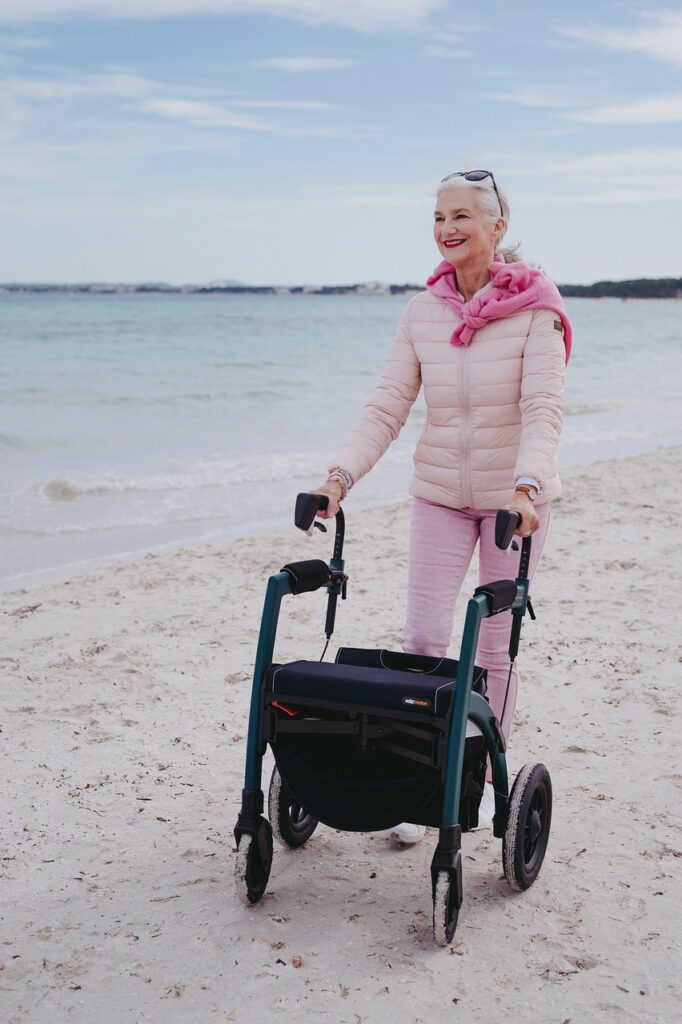Why the Right Walker Matters
A sturdy walker can restore confidence, prevent falls, and keep older adults active in their own homes. Yet the upfront price, even for a basic model, can feel steep on a fixed income. The good news? Several programs can bring that cost down to zero. Read on to learn how seniors can get walkers for free.
5 Ways to Get a Walker for Free

1. Medicare Part B
Medicare covers walkers (including rollators) as durable medical equipment (DME) when prescribed for home use. After the annual Part B deductible, Medicare pays 80% of the approved amount. Many seniors use Medigap or Medicaid to cover the remaining 20%.
2. Medicaid & HCBS Waivers
If you’re dual-eligible, your state Medicaid program may cover the cost of a walker completely no coinsurance required.
3. Veterans Affairs (VA)
Eligible veterans may receive walkers for free through the VA’s prosthetics program. Contact your local VA clinic to learn more.
4. Non-Profit Charities
Organizations like the Salvation Army, Religious Charities, and local Aging & Disability Resource Centers often offer free walkers through equipment loan closets.
5. Community Exchanges
Look into senior centers, “Buy Nothing” Facebook groups, or local medical equipment rental stores. These often have gently used walkers available at no cost.
Related post: How to Get a Free Mobility Scooter
Step-by-Step: How to Get a Walker for Free Through Medicare
- Visit Your Doctor
Request a mobility assessment and prescription. It must be documented as medically necessary. - Choose a Medicare-Approved Supplier
Use the Medicare.gov supplier directory or ask your doctor for a recommendation. - Buy or Rent
Medicare usually buys standard walkers outright but may rent rollators for 13 months before converting to a purchase. - Confirm Assignment
Make sure your supplier accepts Medicare assignment to avoid extra charges. - Pay Your Share
After your Part B deductible, you pay 20%—unless you have Medigap, Medicaid, or another secondary insurance to cover it. - Receive and Adjust Your Walker
The supplier will help adjust the walker to your height and explain how to use it safely.
How Much Does a Walker Cost?
- Basic folding walker: $20–$100
- Rollator with seat: $50–$100
- Heavy-duty models: $150–$250+
With Medicare, a $100 walker could cost you just $20, or even $0 with additional coverage or assistance programs.
Related Guides You May Find Helpful
- Free Mobility Aids for Seniors
- Will Medicare Pay for a Mobility Scooter?
- Free Wheelchair for Seniors
FAQs
How do I get a walker through Medicare?
Ask your doctor for a prescription and use a Medicare-approved supplier. After meeting the deductible, Medicare covers 80%. Secondary insurance may cover the rest.
Does Medicare pay for walkers?
Yes, under Medicare Part B, walkers are covered as durable medical equipment when medically necessary.
Does Medicare pay for walkers for seniors?
Yes, if you’re 65+ and meet medical requirements, Medicare will cover most of the cost.
How much does a walker cost?
Retail prices range from $20 to $250+, but most people pay 20% or less with Medicare or even $0 with additional assistance.
Do you need a prescription to a walker?
Yes. A doctor must prescribe a walker for it to be covered by Medicare or insurance.
Final Thoughts
Getting a free walker for seniors is easier than many people think, especially when Medicare, Medicaid, or local charities are involved. Make sure to work with approved providers, ask the right questions, and explore all your options.